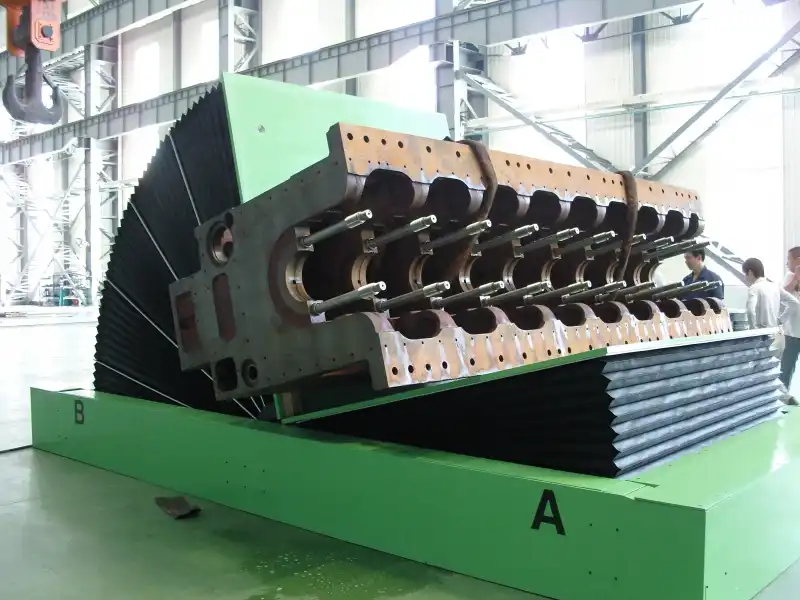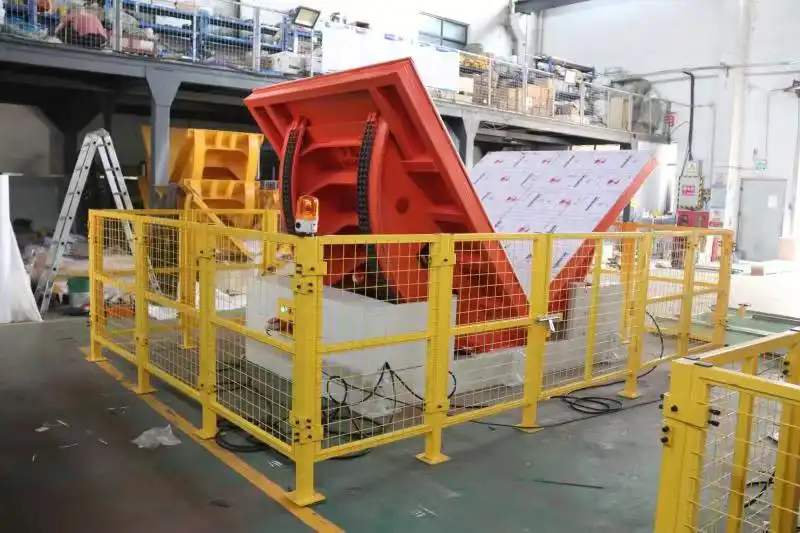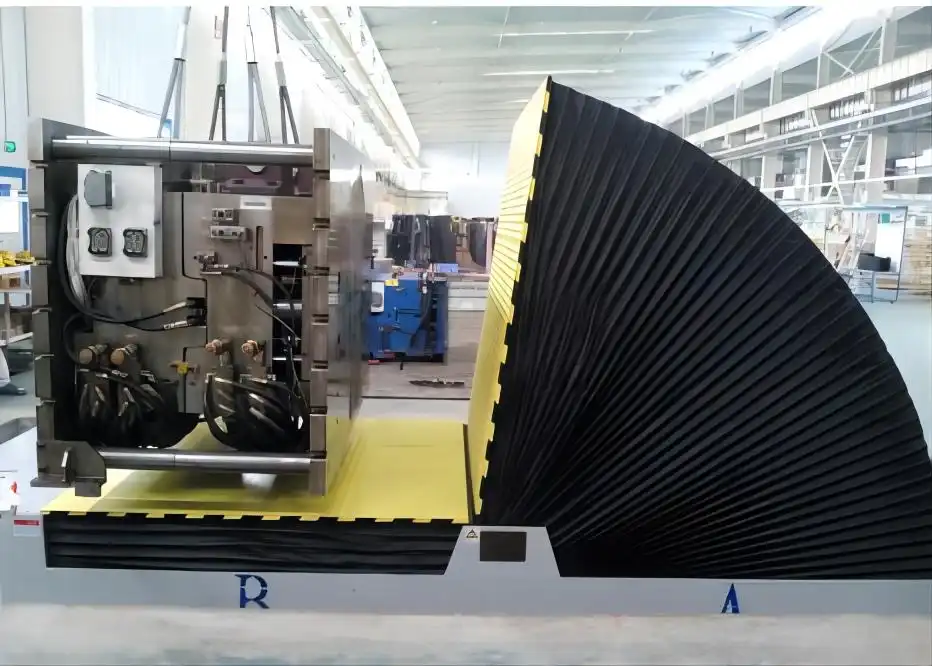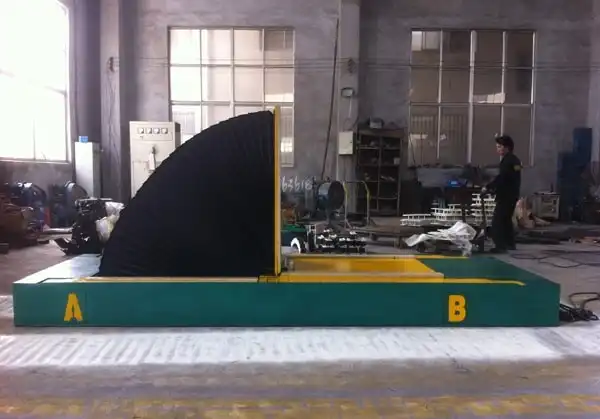Mold flipper: how do you ensure service and spare parts availability in Saudi Arabia?
You have invested in a powerful, essential piece of equipment for your facility in Saudi Arabia: a mold flipper. It is critical for your operations, handling heavy and valuable molds safely and efficiently. But a frightening thought keeps you up at night. What happens if it breaks down? Your production line stops. Your team is idle. The closest technician is thousands of miles away, and the necessary spare part is stuck in customs for weeks. Every hour of downtime bleeds money and damages your reputation. This is a scenario no plant manager or owner wants to face. But what if you could turn this potential crisis into a minor, manageable issue? What if you had a clear, robust strategy to guarantee rapid service and immediate access to spare parts, right there in the Kingdom?
Ensuring reliable service and spare parts availability for a mold flipper in Saudi Arabia requires a multi-layered strategy. This involves choosing a supplier with a proven local or regional service network, maintaining a well-defined inventory of critical spare parts on-site, using remote diagnostic technologies for instant troubleshooting, and defining all responsibilities within a clear Service Level Agreement (SLA).

This comprehensive approach is the fundamental difference between a smooth, predictable operation and one plagued by constant uncertainty and costly delays. It's about building resilience directly into your maintenance plan. Let's break down each of these layers. I want to give you a practical roadmap you can use to protect your investment and ensure your mold flipper remains a productive asset, not a source of stress.
Why is a local service network crucial for mold flippers in Saudi Arabia?
You might believe that choosing a supplier with a stellar global reputation is enough. You trust their manufacturing quality and engineering prowess, and that's a good start. But when a hydraulic line fails or an electrical sensor gives out during a critical production run in Riyadh or Dammam, that global reputation won't get your machine running again. You are suddenly faced with frustrating time zone differences for a simple phone call, language barriers, and cripplingly long lead times just to get a qualified technician on a plane. The logistical hurdles of visas and travel alone can turn a simple repair into a week-long shutdown. A dedicated local or regional service network completely changes this equation. It means having trained, experienced technicians on the ground, people who speak the language, understand the local business culture, and can be at your facility in hours, not days.
A local service network is crucial for mold flippers in Saudi Arabia because it massively reduces machine downtime. It provides rapid-response technicians who eliminate delays from international travel and logistics, understand the local language and customs, and can navigate regional supply chains for parts, ultimately safeguarding your production schedule and profitability.

The Real Cost of Downtime vs. The Value of Local Presence
When I talk to clients, I always ask them to look beyond the initial purchase price of a machine. The true cost of ownership includes maintenance, parts, and most importantly, the cost of potential downtime. A supplier who relies solely on international support might offer a slightly lower price upfront, but the hidden costs can be staggering. Think about it. An issue arises. You call a support line halfway across the world. You might wait a day just for a response because of time zones. Then, they need to schedule a technician, who needs a visa, flights, and accommodation. This process can take over a week before someone even looks at your machine.
In my own journey, from an engineer on the factory floor to owning my own packing machine factory, I've seen this play out many times. I remember an early client who opted for a machine from a company with no presence in the Middle East. They saved some money initially. But six months later, a specialized gearbox failed. The two weeks it took to get a technician and the part from Europe cost them more in lost production than their initial savings. This experience taught me a valuable lesson. At SHJLPACK, providing a "TOTAL SOLUTION FOR WRAPPING MACHINE" means thinking about these long-term realities. That’s why we build regional partnerships. A local service presence isn't a luxury; it's a fundamental part of a reliable industrial solution, especially in a rapidly growing market like Saudi Arabia.
| Factor | Relying on International-Only Support | Partnering with Local/Regional Network |
|---|---|---|
| Response Time | Days or weeks, due to travel and logistics. | Hours or 1-2 days, for immediate on-site help. |
| Repair Cost | High, includes international travel, accommodation, and visa costs. | Lower, limited to local travel and labor hours. |
| Cultural & Language Barriers | Potential for miscommunication and delays. | Smooth communication, understanding of local business practices. |
| Parts Logistics | Weeks of waiting for international shipping and customs clearance. | Faster access through local stock or regional distribution. |
What specific spare parts for a mold flipper should I stock locally?
You understand the need for spare parts. But which ones? The last thing you want is to tie up valuable capital in a warehouse filled with expensive components that you might never use. It feels wasteful. But the opposite approach is even riskier. Being too lean on spares means a simple, low-cost part failure, like a single electrical relay or a proximity switch, can bring your entire multi-ton mold flipper to a grinding halt. Suddenly, your "just-in-time" inventory philosophy becomes a "just-too-late" operational nightmare while you wait anxiously for a delivery. The solution isn't to buy everything or to buy nothing. The key is to develop a strategic, data-driven list of critical spares that balances the cost of inventory against the risk of downtime.
For a mold flipper operating in Saudi Arabia, you should locally stock a carefully selected inventory of spare parts. This list must prioritize high-wear items and components with long international lead times. It should always include hydraulic system components like seals and hoses, common electrical parts like sensors, relays, and fuses, and critical mechanical elements such as specific bearings or drive system parts.

Building Your Strategic Spare Parts Inventory
Creating this list isn't guesswork. It's a collaborative process between you and a knowledgeable supplier. When we deliver a machine, we provide a Recommended Spare Parts List (RSPL). This list isn't generic. It's based on decades of experience, failure data from hundreds of machines in the field, and a deep understanding of which components work the hardest. We help you categorize your inventory to make smart decisions.
Think of it in tiers. First, you have the essentials. These are low-cost consumables that are guaranteed to wear out. Then, you have the critical components. These might not fail often, but if they do, the lead time to get a new one is very long. Having one of these on your shelf is an insurance policy. For an operation in Saudi Arabia, where shipping can be a bottleneck, this insurance is vital. I always advise my clients to analyze the failure modes. Ask yourself: what part failing would cause the longest shutdown? That part should be on your shelf. The cost of stocking a $100 sensor is insignificant compared to the cost of even one day of lost production, which can run into tens of thousands of dollars. It's about making a small investment to protect a much larger one.
| Parts Category | Examples | Recommended Stock | Rationale |
|---|---|---|---|
| Critical Wear Parts | Hydraulic seals, gaskets, filters, drive chains, specific wear pads. | Minimum 1-2 complete sets. | These parts are designed to wear out. Replacement is predictable and necessary. |
| Electrical Consumables | Fuses, relays, proximity sensors, limit switches, push buttons. | A small stock of each type. | High frequency of failure, low cost. A quick swap can prevent a major shutdown. |
| Long-Lead Time Items | Custom motors, specific PLC modules, specialized bearings, hydraulic pumps. | At least one unit. | These can take months to source and deliver. Downtime would be catastrophic. |
| General Hardware | Specialized bolts, hydraulic fittings, connectors. | A small assortment. | Often overlooked, but being unable to find a specific fitting can stop a repair dead. |
How can remote diagnostics supplement local service teams in Saudi Arabia?
You have a local service team in place. This is a great step. But sometimes, even the best local technician arrives on-site only to discover the problem is more complex than expected. They might not have the specific diagnostic tool or the correct replacement part. The first visit becomes a fact-finding mission, not a repair mission. The real fix has to wait for a second visit after they've consulted with the head office and ordered the right part. This doubles your downtime and your frustration. You're paying for a skilled technician's time just for them to tell you what you already know: the machine is still broken. Modern remote diagnostics, powered by IoT and secure network connections, offer a powerful solution. It allows the manufacturer's top experts to "see" inside your machine from their office, thousands of miles away, guiding your local team to a faster, more precise resolution on the very first visit.
Remote diagnostics significantly enhance local service in Saudi Arabia by enabling immediate, expert-level troubleshooting. Through a secure industrial VPN, the supplier's engineers can directly access the mold flipper's PLC, analyze alarm histories, and review operational data. This allows them to identify the root cause of a problem and specify the exact required part before a local technician is even dispatched, drastically reducing diagnostic time, repeat visits, and overall repair duration.

The Synergy of Local Hands and Remote Brains
This technology is a game-changer for industrial maintenance. It bridges the gap between your on-site personnel and the deep expertise of the machine's original design engineers. The process is straightforward and secure. When a fault occurs, your local maintenance staff can initiate a secure connection. Our engineers at SHJLPACK can then log in to the machine's control system. We can see exactly what the operator sees, and much more. We can check the status of every sensor, review the sequence of operations leading up to the fault, and analyze the alarm logs.
This digital capability transforms the entire repair workflow. Instead of a local technician spending hours on diagnosis, they can arrive with a clear plan and the correct part in hand. But the benefits go beyond reactive repairs. This is where we step into predictive maintenance. By installing IoT sensors to monitor key parameters like motor vibration, hydraulic fluid temperature, and cycle times, we can collect data over time. Our systems can then analyze this data to detect subtle changes that indicate a future failure. We can then alert you, for example, that a specific bearing is showing increased vibration and should be scheduled for replacement during the next planned shutdown. This proactive approach helps you move from fixing breakdowns to preventing them entirely, which is essential for achieving ambitious uptime goals.
| Aspect | Traditional Repair Response | Remote-Assisted Response |
|---|---|---|
| Initial Step | Local team tries to diagnose the issue. | Local team enables remote access for supplier's experts. |
| Diagnosis Time | Hours or days. Can require a service visit. | Minutes or a few hours. Done remotely. |
| First Visit Outcome | Often just a diagnosis. A second visit is needed for repair. | Repair is completed. Technician arrives with the right parts and plan. |
| Total Resolution Time | Can stretch from days to over a week. | Often reduced to less than 24-48 hours. |
Beyond Parts and Service: Why Your Supplier's Mindset is the Most Critical Factor
Let's say you have done everything right. You have a contract with a supplier that guarantees a local service presence in Saudi Arabia. You have a well-stocked inventory of critical spare parts on-site. You even have a detailed Service Level Agreement (SLA) that specifies response times. You feel secure. But then, a truly complex and unexpected problem occurs, one that isn't clearly covered in the contract. Or, five years down the road, your business needs change, and you want to adapt the mold flipper to handle a new type of product. You reach out to your supplier, and you realize they are just a vendor. They will fulfill the contract to the letter, but nothing more. They won't collaborate, they won't offer creative solutions, and they won't go the extra mile. The partnership you thought you had doesn't really exist. This is why the ultimate guarantee of long-term success comes from choosing a supplier who operates as a true strategic partner. One whose primary goal is to share knowledge and help your business succeed, not just to sell you a machine.
Ultimately, ensuring the long-term operational success of your mold flipper in Saudi Arabia goes beyond tangible assets like parts and technicians. It hinges on your supplier's core mindset. A true partner proactively shares knowledge, collaborates on new challenges, and invests in your growth, viewing your equipment not as a one-time transaction but as the start of a long-term, mutually beneficial relationship.

From Vendor Transaction to Strategic Partnership
This is a lesson I learned the hard way during my own career. When I was an engineer, and later when I started my first factory, I worked with all kinds of suppliers. There were the vendors. They sold me a machine, and then they were gone. Getting support was like pulling teeth. Then there were the partners. These were the companies that would call me a year later to suggest a small modification that could improve efficiency, or share a new maintenance technique they had developed. They were invested in my success. The difference in my factory's performance and my own peace of mind was night and day.
That experience is the very reason I founded SHJLPACK on the principle of knowledge sharing. My mission is to give back the expertise that the industry gave me. When we talk about a "TOTAL SOLUTION", we aren't just talking about a machine with service and parts. We are talking about a relationship. A partner, in the context of your mold flipper in Saudi Arabia, is someone who will work with you to train your local operators. They will help you brainstorm how to improve safety protocols. They will provide engineering advice when you want to expand your capabilities. They see your challenges as their challenges. This mindset is the most valuable, yet often most overlooked, component of any major equipment purchase. It's the difference between buying a tool and gaining an ally.
| Aspect | Vendor Mindset | Partner Mindset |
|---|---|---|
| Goal | Complete the sale and fulfill the contract. | Ensure your long-term success and growth. |
| Communication | Reactive, focused on problems and obligations. | Proactive, focused on improvement and opportunity. |
| Problem Solving | "Is this covered by the warranty?" | "How can we work together to solve this?" |
| Long-Term Vision | Focused on the next transaction. | Focused on building a lasting relationship. |
Conclusion
Success with your mold flipper in Saudi Arabia is not just about the hardware. It requires a smart, integrated strategy combining local presence, strategic spares, modern diagnostics, and a true supplier partnership.





